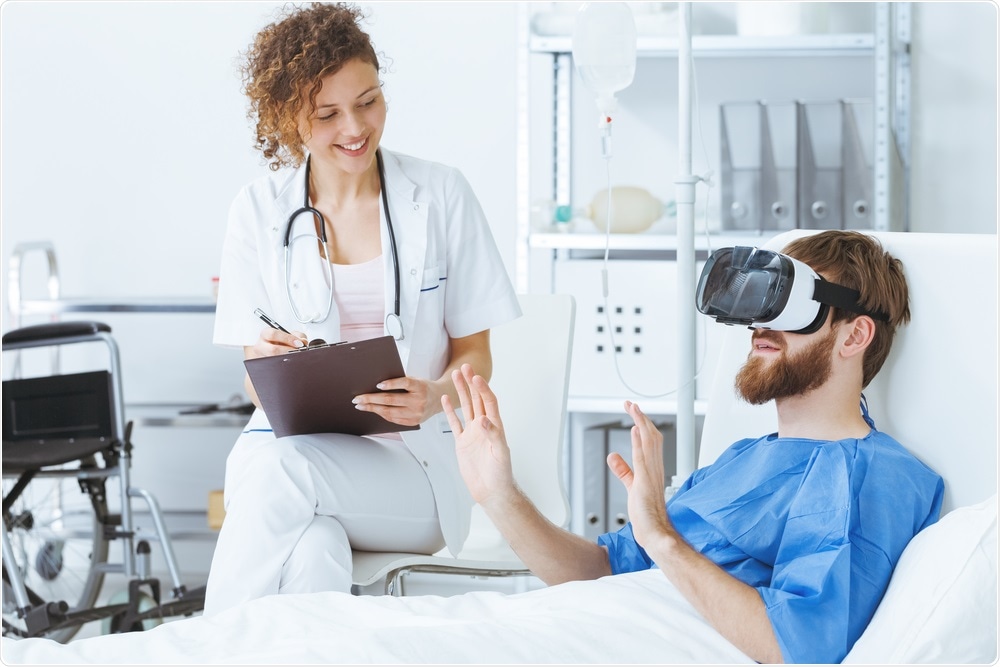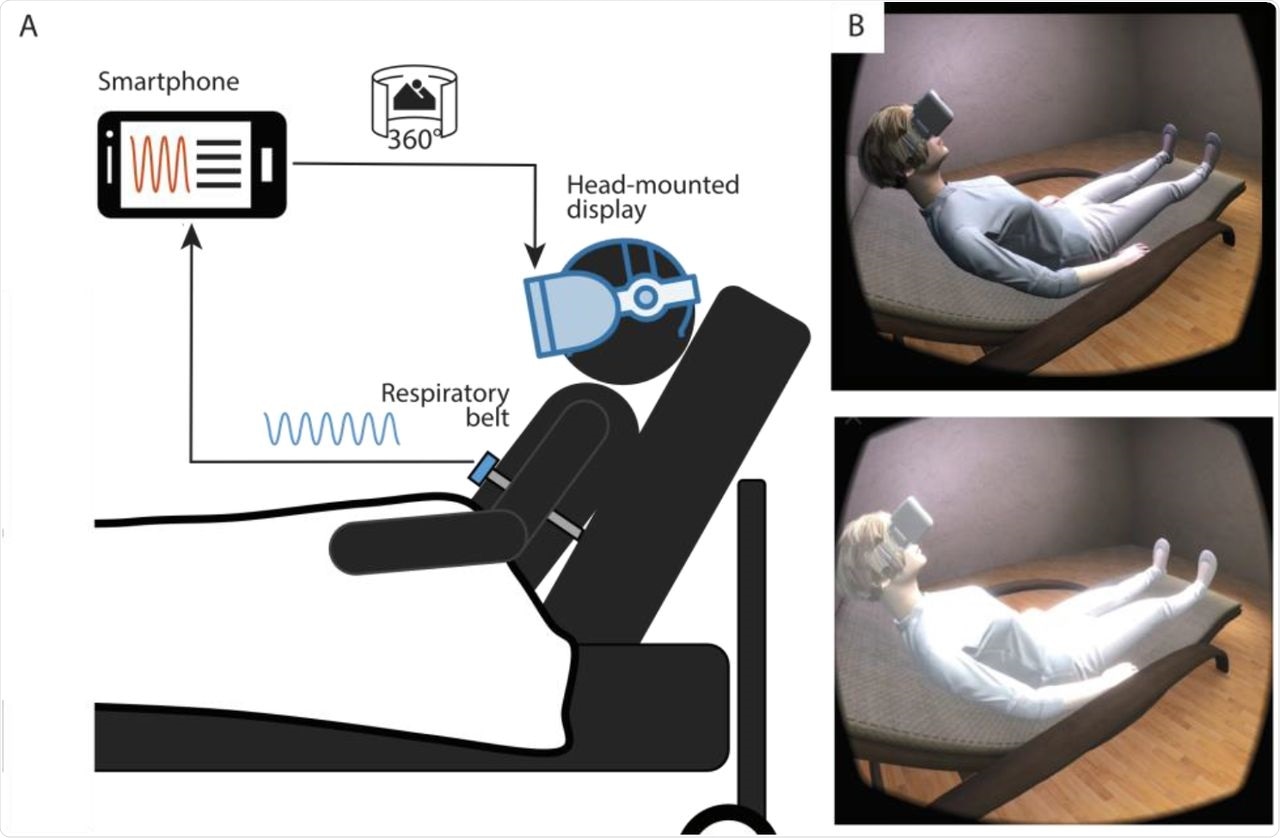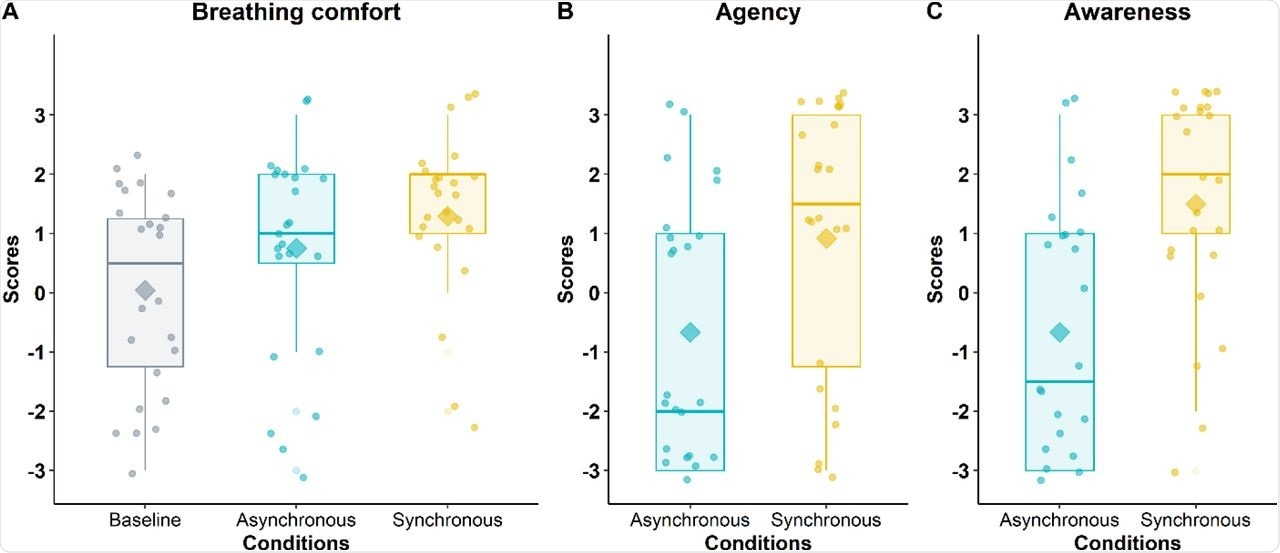Patients recovering from severe coronavirus disease 2019 (COVID-19) pneumonia often suffer from refractory breathlessness.
A recent study published on the preprint server medRxiv* conducted at the University Hospital of Geneva in Switzerland evaluates an immersive virtual reality (iVR)-based digital intervention to alleviate refractory breathlessness in patients recovering from COVID-19 pneumonia.
 Study: Virtual reality exercise to help COVID patients with refractory breathlessness. Image Credit: Photographee.eu / Shutterstock.com
Study: Virtual reality exercise to help COVID patients with refractory breathlessness. Image Credit: Photographee.eu / Shutterstock.com

 This news article was a review of a preliminary scientific report that had not undergone peer-review at the time of publication. Since its initial publication, the scientific report has now been peer reviewed and accepted for publication in a Scientific Journal. Links to the preliminary and peer-reviewed reports are available in the Sources section at the bottom of this article. View Sources
This news article was a review of a preliminary scientific report that had not undergone peer-review at the time of publication. Since its initial publication, the scientific report has now been peer reviewed and accepted for publication in a Scientific Journal. Links to the preliminary and peer-reviewed reports are available in the Sources section at the bottom of this article. View Sources
Refractory breathlessness
Chronic breathlessness syndrome causes a disabling sensation of difficult breathing. It occurs even when the patient undergoes optimized treatment for the diagnosed medical condition.
Refractory breathlessness is a stubborn and unmanageable condition that can be observed in acute disease. This condition often leads to a negative impact on the patients’ quality of life and autonomy.
Since refractory breathlessness accompanies acute conditions, the identification of the underlying condition is essential for pathophysiological treatment. Currently, refractory breathlessness is an underrecognized respiratory condition; thus, there remains a need for developing evidence-based interventions to alleviate breathlessness.
Digital therapeutics
The perception of breathlessness happens through neural pathways similar to pain processing and bodily self-consciousness, as evidenced by neuroimaging. Digiceuticals or iVR-based Digital Therapeutics (DTx) have been used as interventions for alleviating chronic pain in patients with complex regional pain syndrome or spinal cord injury.
In patients with respiratory discomfort, based on visual-respiratory feedback, visual-respiratory stimulation can provide an increased feeling of breathing control and changes in physiological measures of breathing. This approach is also associated with a reduced negative emotional state related to experimentally-induced shortness of breath.
Long COVID
Long COVID is a complex condition where symptoms occur beyond the infection and recovery period of COVID-19. Long COVID symptoms include general weakness, malaise, fatigue, concentration impairments, and breathlessness. Around 25% of long COVID patients complain of breathlessness.
Breathlessness is poorly associated with pulmonary function tests or lung imaging in long COVID. Therefore, current treatments are focused on lung rehabilitation; however, a neuro-rehabilitation approach could be tested to understand and alleviate breathlessness.
COVID-19 Virtual Reality (COVVR) clinical study
The COVVR study is a controlled, randomized, single-blind, cross-over clinical study that is aimed at determining the effects of iVR-based DTx on breathing comfort in patients recovering from severe COVID-19 pneumonia. This is a single-site study that was conducted at the University Hospital of Geneva in Switzerland and is registered with ClinicalTrials.gov (NCT04844567).
Thirty-one patients were included, all of whom were recovering from severe COVID-19 pneumonia and had refractory breathlessness with a self-rated intensity of five or higher on a ten-point visual analogic dyspnea scale. All patients who participated in this study provided consent and spoke French or English.
Patient exclusion criteria included unstable respiratory, neurological, or cardiac conditions, or psychiatric illness and a score of below 25 on the Montreal Cognitive Assessment (MoCA). Five patients were excluded due to a MoCA score of less than 25. The cross-over groups were randomly assigned and concealed from the referring clinician.
Experimental setup
Patients were in a semi-seated position in their hospital bed and wore a respiration belt fitted on the abdomen that recorded respiratory movements. They also wore a head-mounted display that held a VR-compatible smartphone.
The smartphone ran the VR simulation and was connected via Bluetooth® to the respiration belt. The scientists developed software in collaboration with MindMaze to collect and filter respiratory data and render a computer-generated virtual environment in real-time.
In the VR environment, patients could see a gender-matching virtual body lying on a bed in a similar position as theirs. The virtual body gave a visual effect of respiratory movements. This visual effect could be in synchrony (synchronous condition) or massive asynchrony (asynchronous condition) with the patient’s respiratory movements.
Participants received synchronous (intervention) or asynchronous (control) feedback of their breathing that was embodied via a gender-matched avatar in the iVR. Before the first exposure and after both experimental conditions, patients filled in questionnaires. Breathing patterns were captured continuously. The scientists also quantified the subjective benefit related to such an intervention and the feasibility of using this new breathing rehabilitation tool at home or in the wards in long COVID patients.
 Portable setup and virtual reality feedback. (A) A respiratory belt captures the respiratory movements of the chest and sends the signal to a smartphone via Bluetooth. A custom software generates the virtual environment. (B) A matched-gender avatar is displayed and observed by the patients by slightly turning their head to the side. The virtual body is illuminated synchronously or asynchronously with respect to the patient’s chest movements. The top image represents the end of the expiration with a low flashing intensity, while the bottom image shows the end of the inspiration corresponding to the maximal luminosity in the synchronous condition.
Portable setup and virtual reality feedback. (A) A respiratory belt captures the respiratory movements of the chest and sends the signal to a smartphone via Bluetooth. A custom software generates the virtual environment. (B) A matched-gender avatar is displayed and observed by the patients by slightly turning their head to the side. The virtual body is illuminated synchronously or asynchronously with respect to the patient’s chest movements. The top image represents the end of the expiration with a low flashing intensity, while the bottom image shows the end of the inspiration corresponding to the maximal luminosity in the synchronous condition.
Visual-respiratory stimulation improved breathing comfort
A total of 26 patients (27% women; mean age=57) were enrolled in this study, of which 14 patients were randomly assigned to the “synchronous/asynchronous” sequence and 12 to the “asynchronous/synchronous” sequence. Data was not available for two patients.
The mean rating of breathing comfort was 0.1 at baseline, -0.8±1.8 for asynchronous, and 1.3±1.4 for synchronous feedback, where -3 indicates least breathing comfort and 3 indicates highest breathing comfort. Of all patients, 91.2% were satisfied with the intervention and 66.7% perceived it as beneficial for their breathing. No patient reported any adverse event.
 The boxplots depicting subjects’ ratings during asynchronous condition compared to the synchronous condition, independent of experimental sequence. The thick line within a box plot represents the median, the diamond represents the mean, the upper boundary of the box indicates the 25th percentile and lower boundary the 75th percentile. The whiskers above and below the box indicate the minimal and maximal values, while points above the upper or below the whiskers indicate outliers. Subjective ratings were measured using a 7-point Likert scale with −3 = Strongly disagree, −2 = Disagree; −1 = Somewhat disagree; 0 = Neither agree nor disagree; 1 = Somewhat agree; 2 = Agree; 3= Strongly agree.
The boxplots depicting subjects’ ratings during asynchronous condition compared to the synchronous condition, independent of experimental sequence. The thick line within a box plot represents the median, the diamond represents the mean, the upper boundary of the box indicates the 25th percentile and lower boundary the 75th percentile. The whiskers above and below the box indicate the minimal and maximal values, while points above the upper or below the whiskers indicate outliers. Subjective ratings were measured using a 7-point Likert scale with −3 = Strongly disagree, −2 = Disagree; −1 = Somewhat disagree; 0 = Neither agree nor disagree; 1 = Somewhat agree; 2 = Agree; 3= Strongly agree.
Implications
The current study demonstrates the benefit of the visual-respiratory iVR-based intervention in patients recovering from COVID-19. The scientists, therefore, propose that this iVR-based immersive DTx with a good safety profile is an inexpensive neuro-rehabilitation tool that could be used to increase breathing comfort in patients recovering from COVID-19.

 This news article was a review of a preliminary scientific report that had not undergone peer-review at the time of publication. Since its initial publication, the scientific report has now been peer reviewed and accepted for publication in a Scientific Journal. Links to the preliminary and peer-reviewed reports are available in the Sources section at the bottom of this article. View Sources
This news article was a review of a preliminary scientific report that had not undergone peer-review at the time of publication. Since its initial publication, the scientific report has now been peer reviewed and accepted for publication in a Scientific Journal. Links to the preliminary and peer-reviewed reports are available in the Sources section at the bottom of this article. View Sources
Journal references:
- Preliminary scientific report.
Betka, S., Kannape, O.A., Fasola, J., et al. (2021). Virtual reality exercise to help COVID patients with refractory breathlessness. medRxiv. doi:10.1101/2021.10.26.21265510. https://www.medrxiv.org/content/10.1101/2021.10.26.21265510v1.
- Peer reviewed and published scientific report.
Betka, S., K. Oliver, F. Jemina, L. Florian, C. Sylvain, S. Aline, S. Thomas, et al. 2022. “Virtual Reality Intervention Alleviates Dyspnea in Patients Recovering from COVID Pneumonia.” European Respiratory Journal 60 (suppl 66). https://doi.org/10.1183/13993003.congress-2022.1205. https://erj.ersjournals.com/content/60/suppl_66/1205.
Article Revisions
- Apr 27 2023 - The preprint preliminary research paper that this article was based upon was accepted for publication in a peer-reviewed Scientific Journal. This article was edited accordingly to include a link to the final peer-reviewed paper, now shown in the sources section.